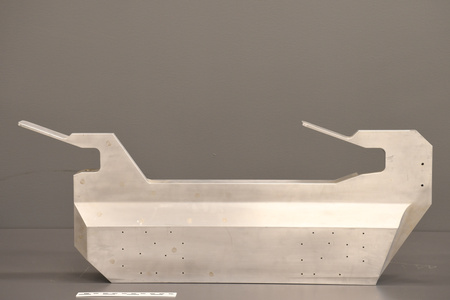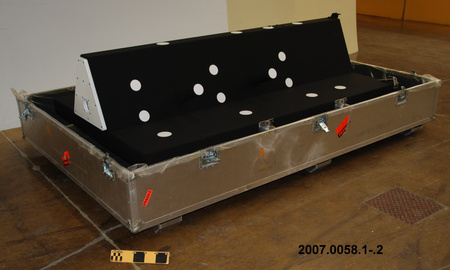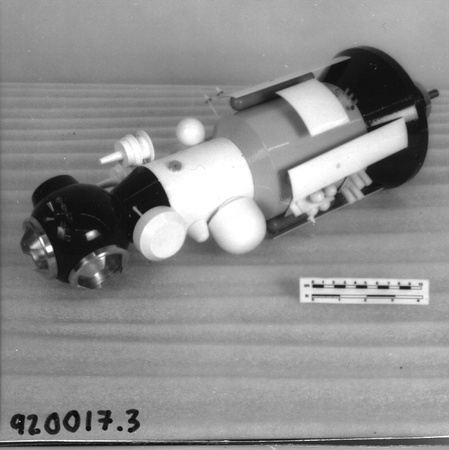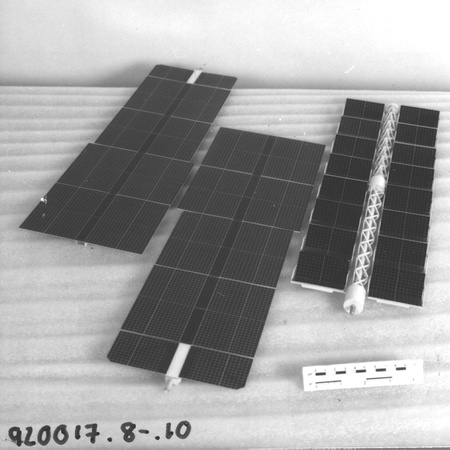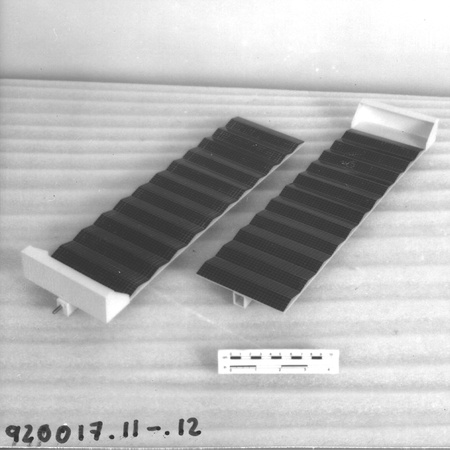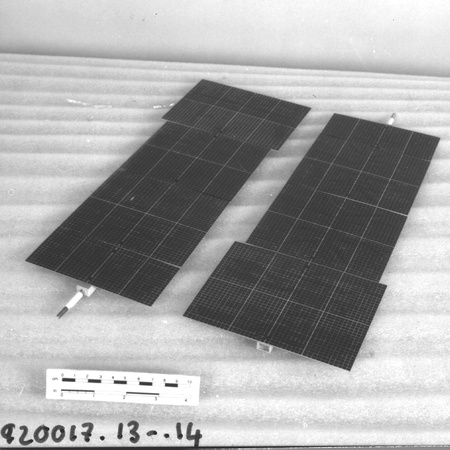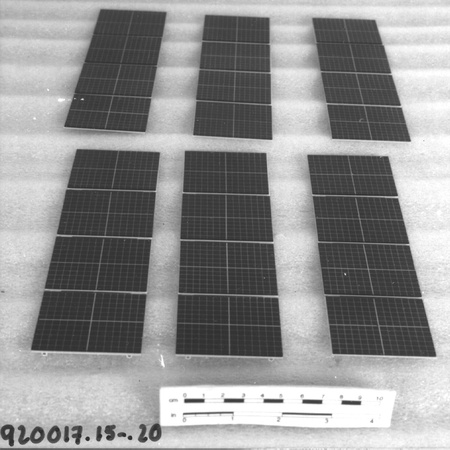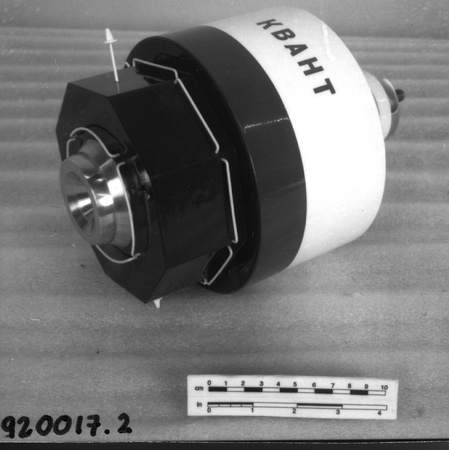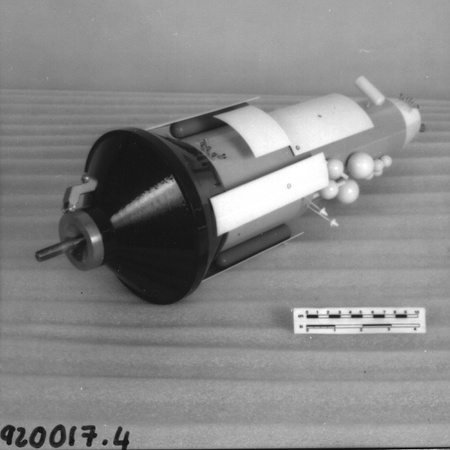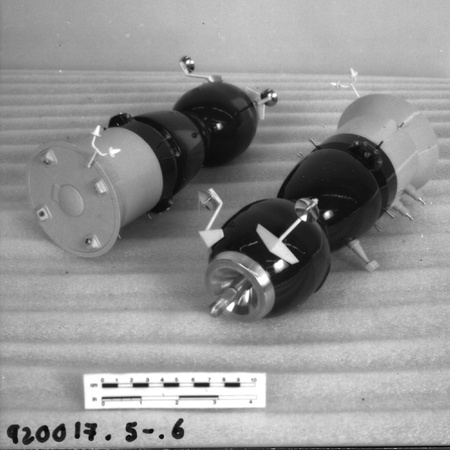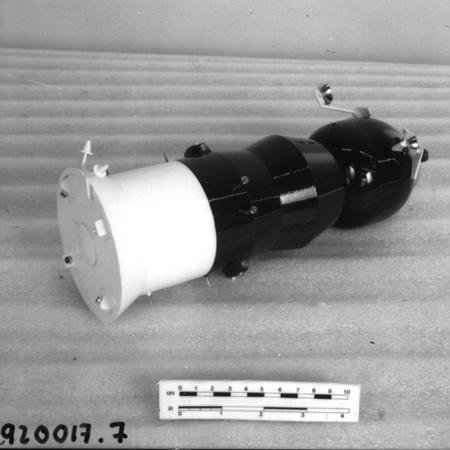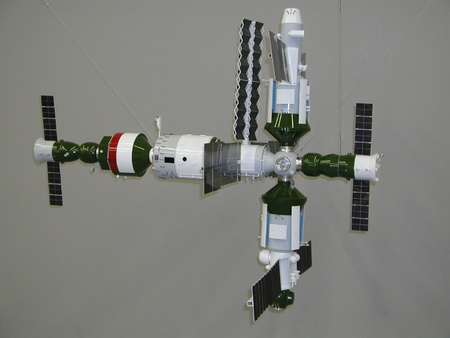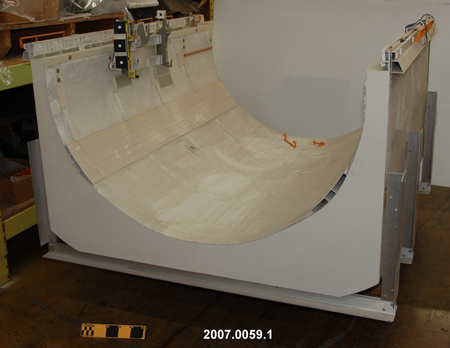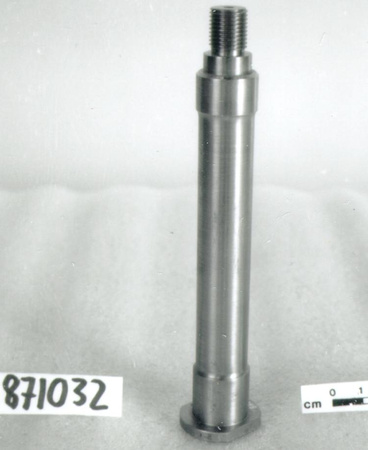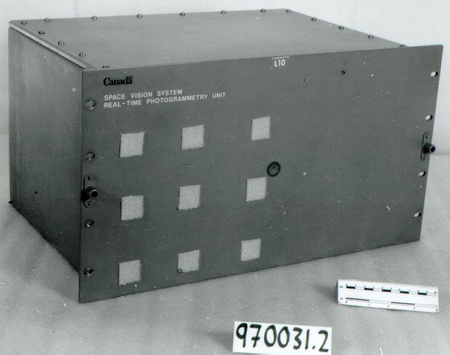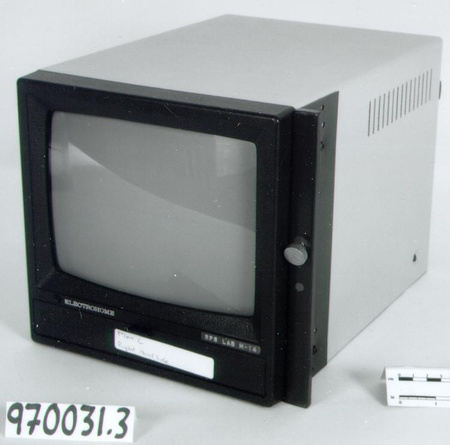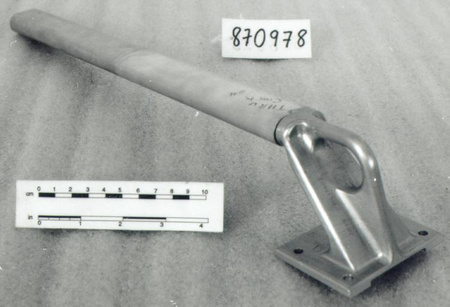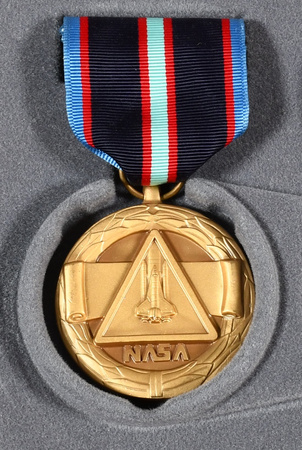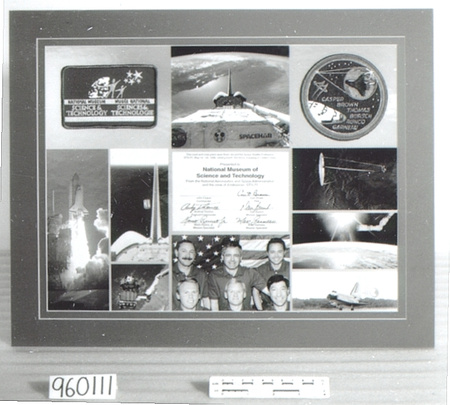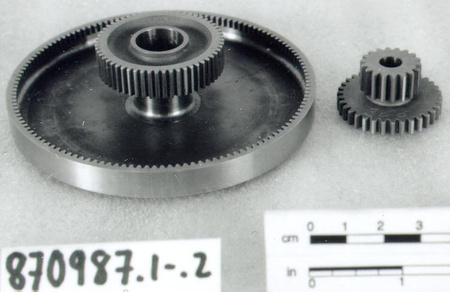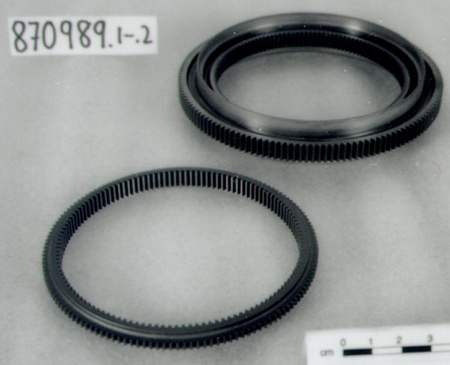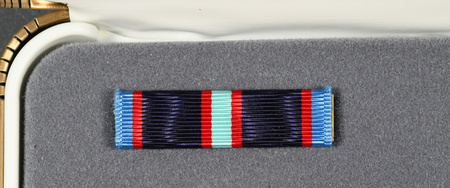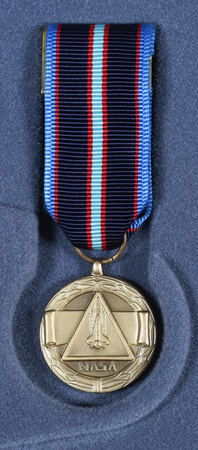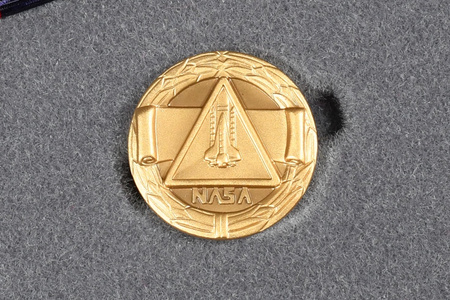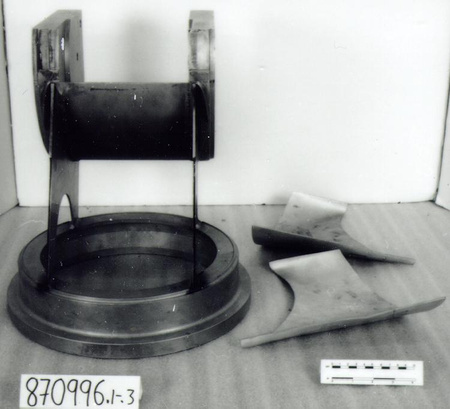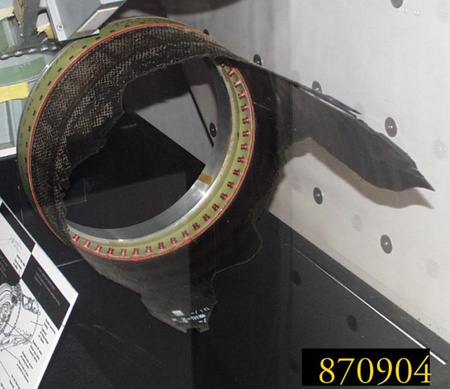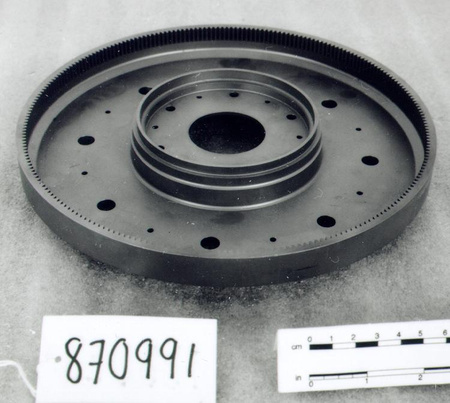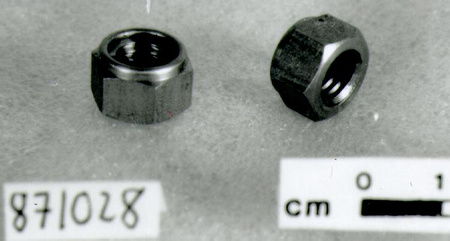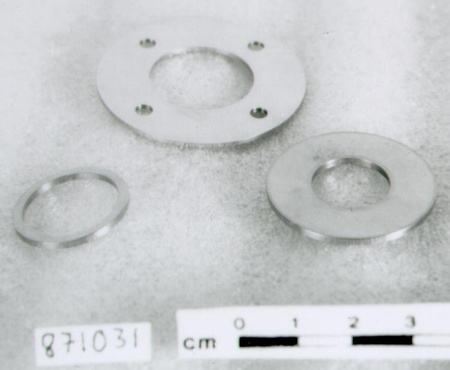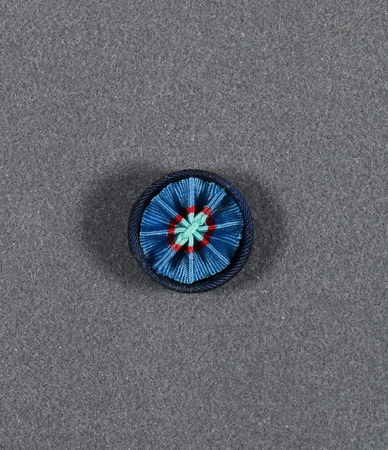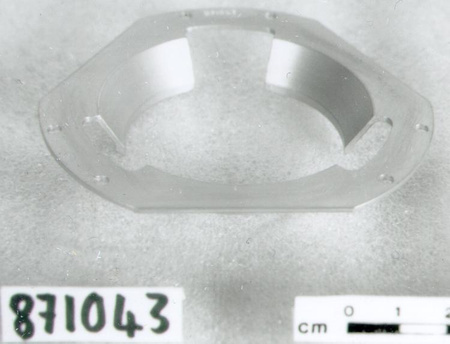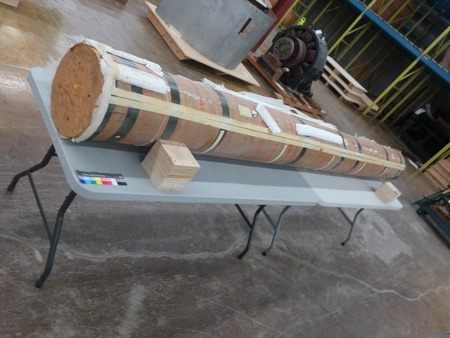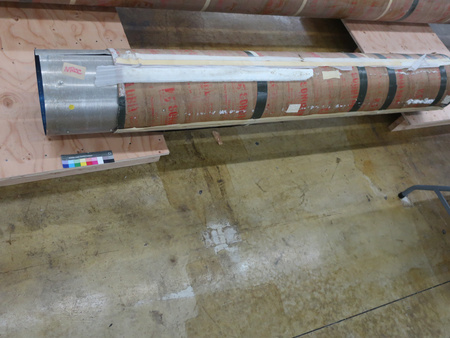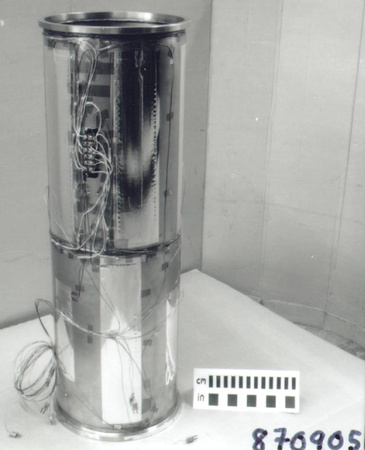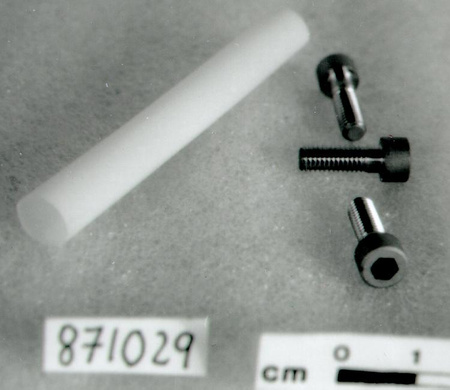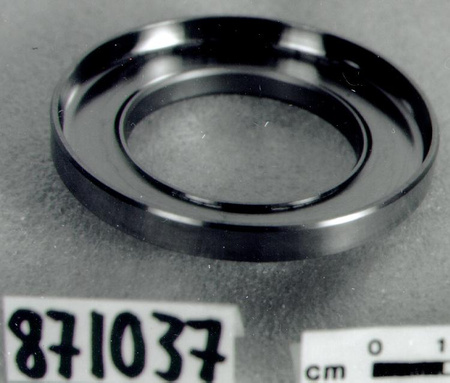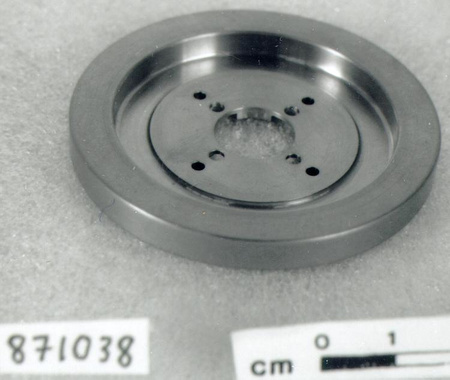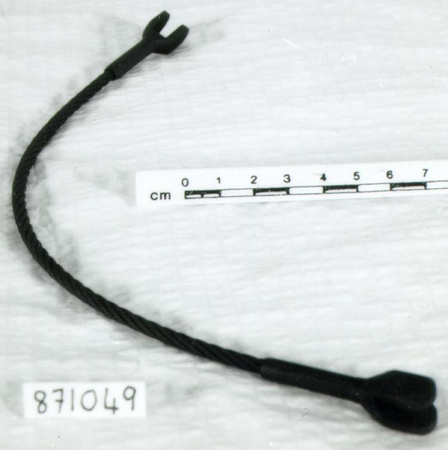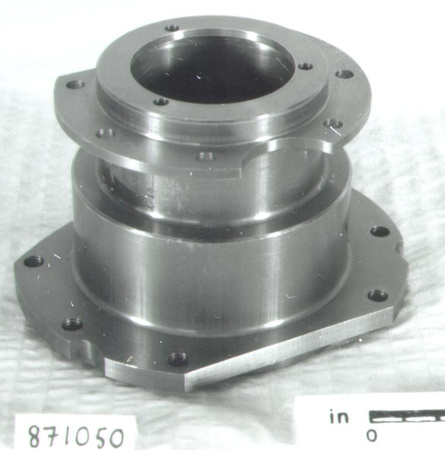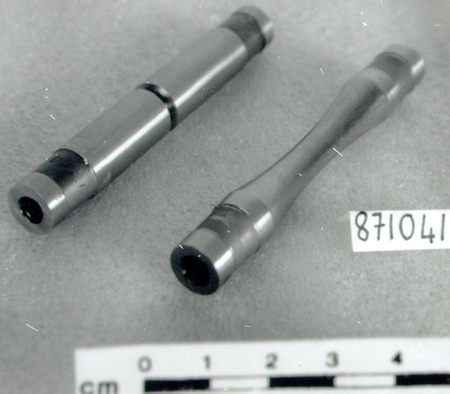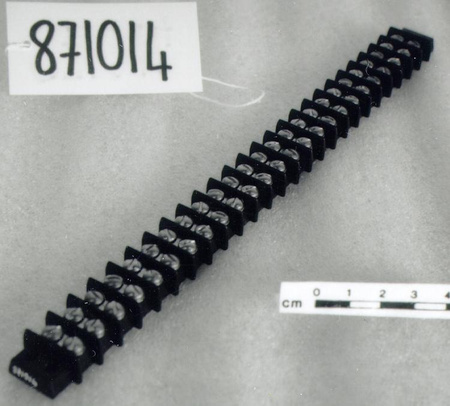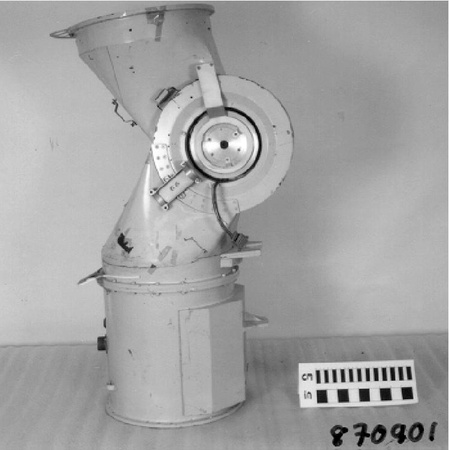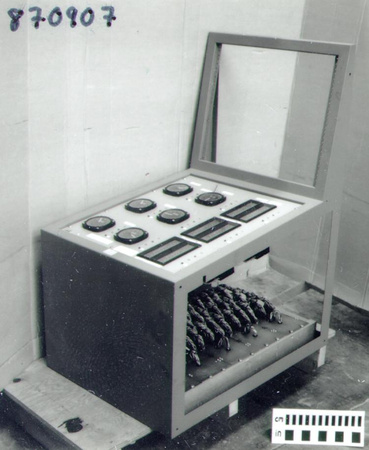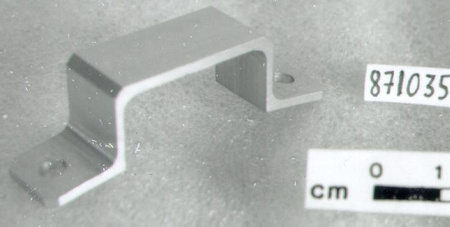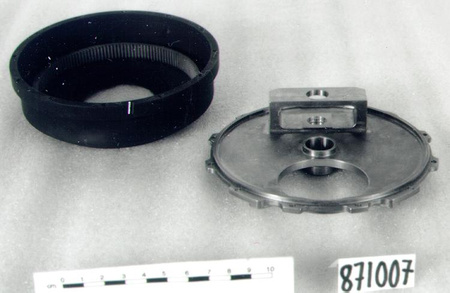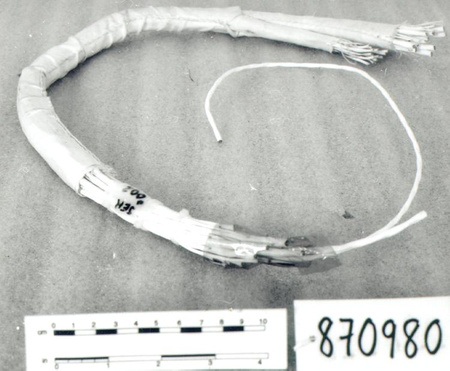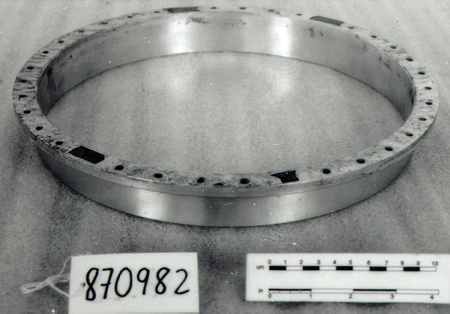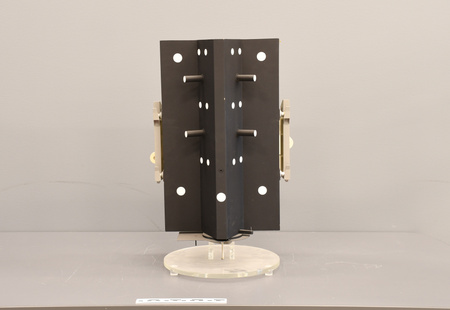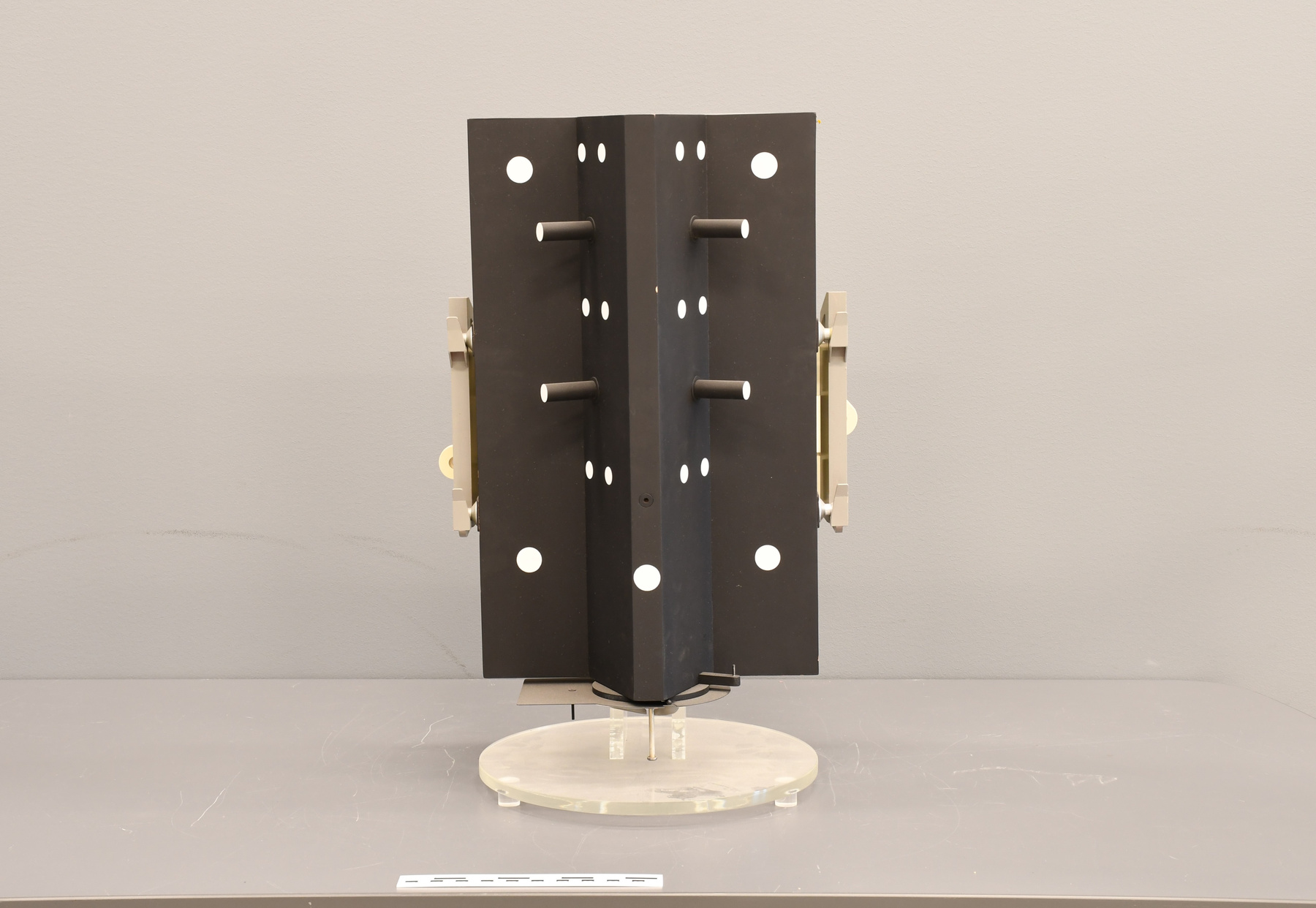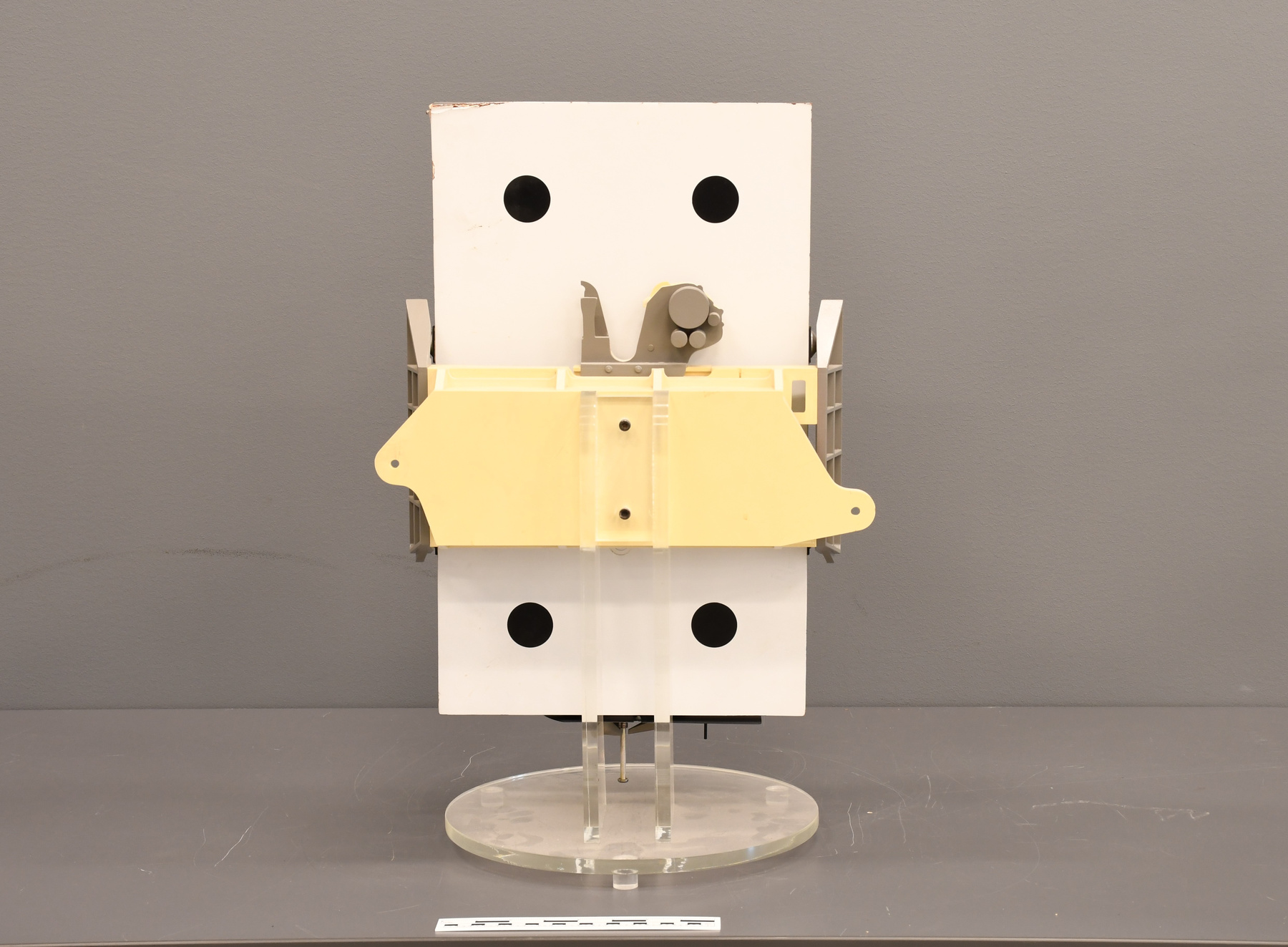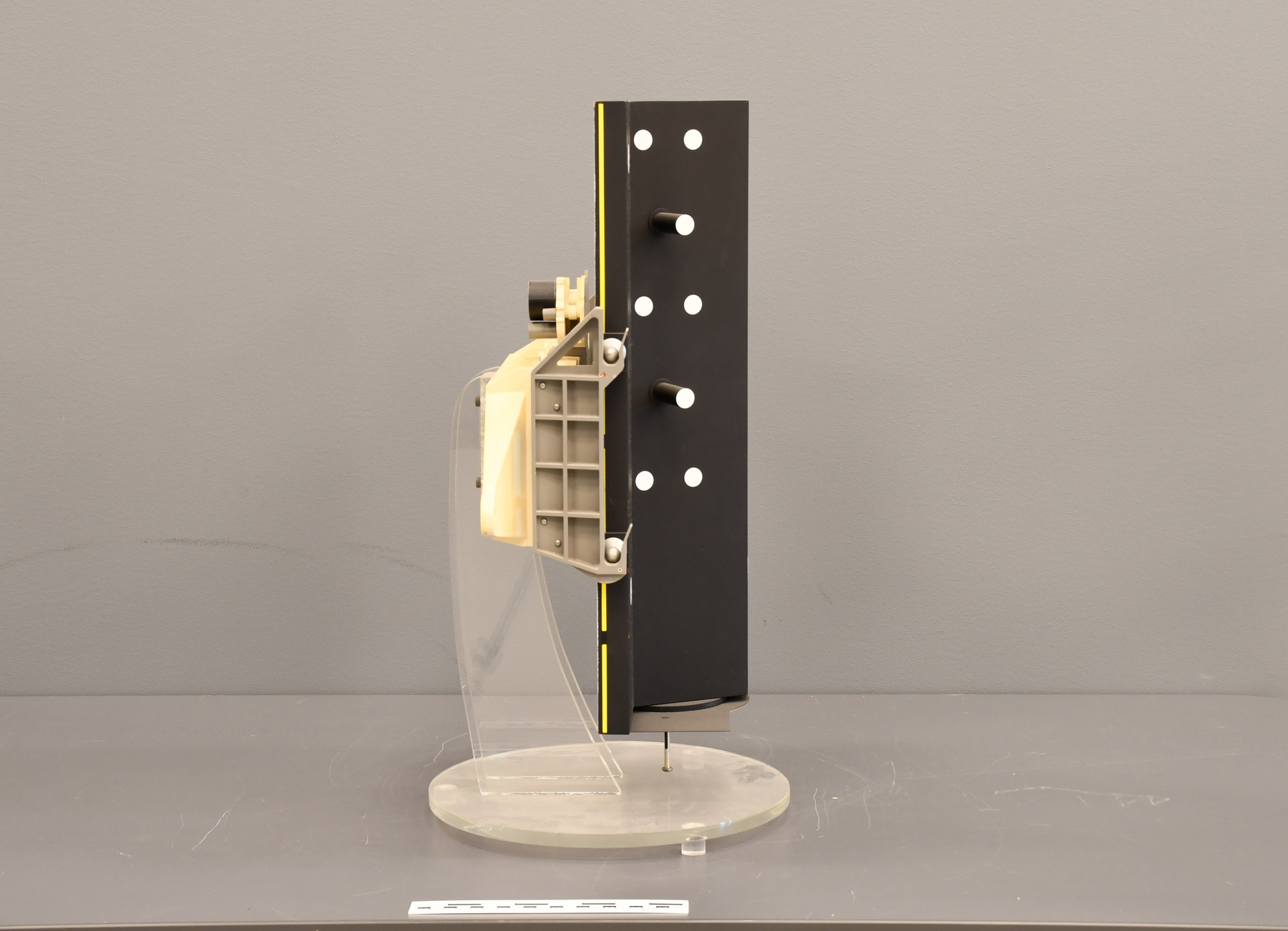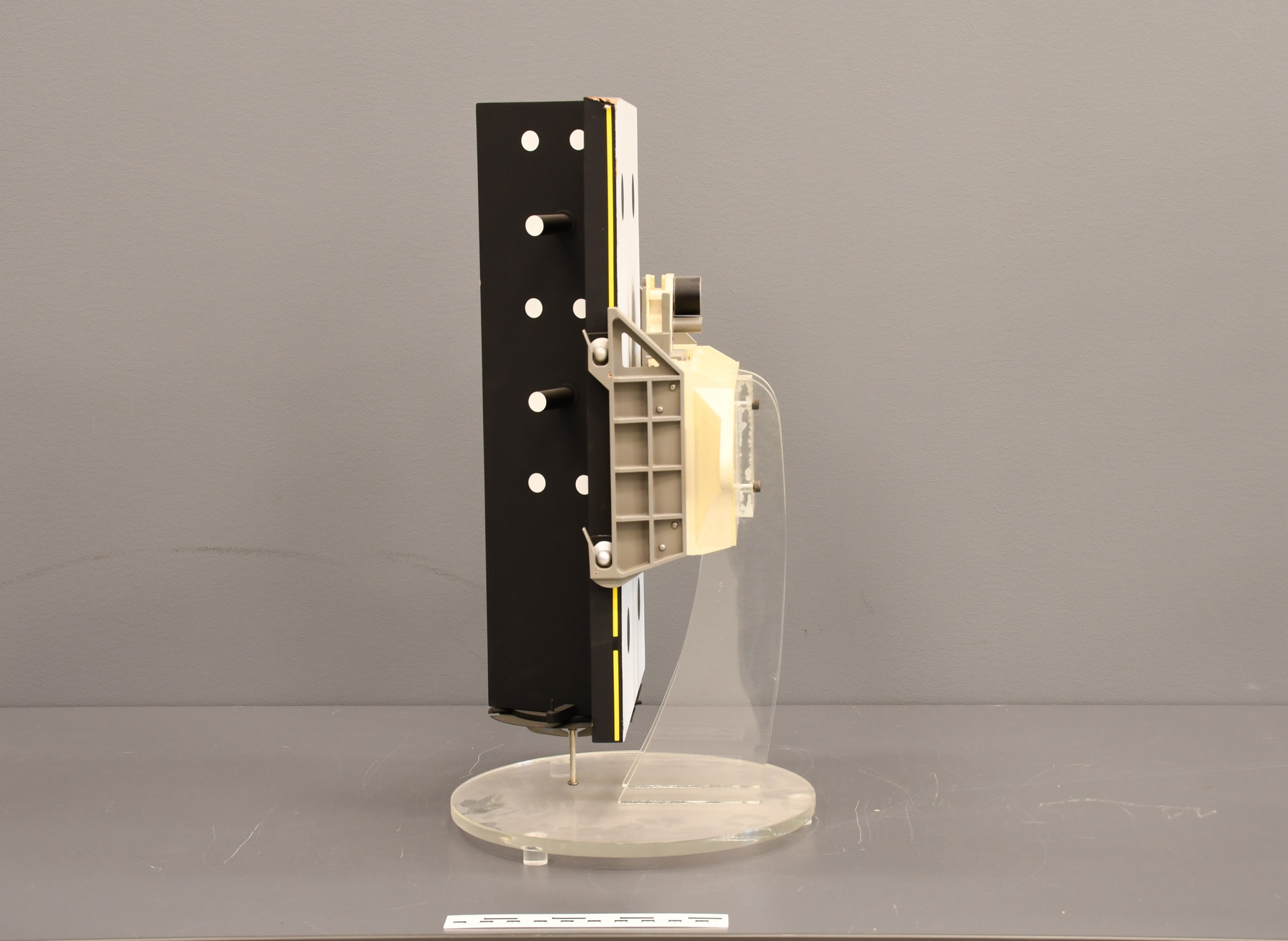Model part
Use this image
Can I reuse this image without permission? Yes
Object images on the Ingenium Collection’s portal have the following Creative Commons license:
Copyright Ingenium / CC BY-NC-ND (Attribution-NonCommercial 4.0 International (CC BY-NC 4.0)
ATTRIBUTE THIS IMAGE
Ingenium,
2015.0574.001
Permalink:
Ingenium is releasing this image under the Creative Commons licensing framework, and encourages downloading and reuse for non-commercial purposes. Please acknowledge Ingenium and cite the artifact number.
DOWNLOAD IMAGEPURCHASE THIS IMAGE
This image is free for non-commercial use.
For commercial use, please consult our Reproduction Fees and contact us to purchase the image.
- OBJECT TYPE
- ENGINEERING/1/32 SCALE
- DATE
- 1990
- ARTIFACT NUMBER
- 2015.0574.001
- MANUFACTURER
- Unknown
- MODEL
- Canadian Target Assembly, Space Vision System
- LOCATION
- Unknown
More Information
General Information
- Serial #
- Prototype
- Part Number
- 1
- Total Parts
- 2
- AKA
- N/A
- Patents
- N/A
- General Description
- An object made of synthetic and metal material/Un objet fait avec des éléments synthétiques et en métal.
Dimensions
Note: These reflect the general size for storage and are not necessarily representative of the object's true dimensions.
- Length
- 31.0 cm
- Width
- 31.0 cm
- Height
- 60.5 cm
- Thickness
- N/A
- Weight
- N/A
- Diameter
- N/A
- Volume
- N/A
Lexicon
- Group
- Space Technology
- Category
- Manned spacecraft
- Sub-Category
- N/A
Manufacturer
- AKA
- Unknown
- Country
- Unknown
- State/Province
- Unknown
- City
- Unknown
Context
- Country
- Unknown
- State/Province
- Unknown
- Period
- Ca. 1991-1992
- Canada
-
This equipment was designed by the National Research Council in Ottawa. Mr. Jim Ross was the design engineer responsible for the project. The Space Vision System (SVS) and Canadian Target Assembly (CTA) were designed to enhance astronauts' vision in the difficult viewing conditions of space. It provided information on the exact location, orientation and motion of a specified target. First tested during mission STS-52 (1992), the successor to the SVS, the Advanced Space Vision System (ASVS) was used by Chris Hadfield during mission STS-74 (1995). L'équipement est construit par le National Research Council D'Ottawa par Mr. Jim Ross qui était l'ingénieure concepteur responsable de le projet. Le Space Vision System (SVS) et le Canadian Target System (CTA) étais conçu pour augmenter la vision des astronautes durant leur temps dans l'espace. L'équipement indique l'orientation, la motion, et la location exacte d'une cible. Il était mis en action pour la première fois lors de la mission STS-52 en 1992. Le descendant du SVS, le ASVS a fini par en être utilise par un astronaute au nom de Chris Hadfield durant la mission STS-74 en 1995. - Function
-
A 1:8 scale structural concept model of the Canadian Target Assembly used in development and testing prior construction of the full scale production prototype. Un modèle structurel sur une échelle de 1:8 du Canadian Target Assembly utilisé pour le développement et essaie avant la construction du prototype a pleine échelle. - Technical
-
This concept model was used by NRC, CSA, and NASA engineers to ensure the final flight hardware would conform to NASA requirements for vibration testing, to endure the rigors of shuttle launch and space flight, and not pose risk to other test equipment. The Space Vision System uses a shuttle TV camera to monitor a pattern of target dots of known spacing arranged on an object to be tracked. As the object moves, the SVS computer measures the changing position of the dots, and provides a real time TV display of the location and orientation of the object. This displayed information helps an operator to guide the Canadarm or the Mobile Servicing System (MSS) when berthing or deploying satellites. Ce modèle a été utilisé par la NRC, CSA et les ingénieurs de NASA pour s'assurer que l'equipment conformait à la norme requise pour l'essai contre la vibration et le choc accumuler par le décollage et vol du fusée tout en posant pas de risque aux autres formes d'équipement abord. Le Space Vision System utilise une navette en forme de caméra de télévision pour vérifier un patron de points ciblée qui sont arrangées sur un objet pour mieux suivre ces mouvements. Le system SVS calcule le changement de position des points pour créer une affiche de l'objet et sa position et orientation sur un écran de télévision. L'information permet à un opérateur de guider le Canadarm ou le Mobile Servicing System (MSS) pour l'amarrage ou pour déployer les satellites. - Area Notes
-
Unknown
Details
- Markings
- None apparent/Rien de visible
- Missing
- None apparent/l'objet a toutes ces pièces
- Finish
- The object has a flat main component that is black with white dots on one side and white with black dots on the other. The main flat component seems to be made of compressed carboard. It is held up on a plexiglass mount with two metal screws and two metal brackets (one on either side) as well as a rectangular shaped piece of synthetic material. L'objet a un composant noir avec des points blancs sur un coter et puis un coter blanc avec des points noirs sur l'autre. Le composant principale a l'air d'être construit de carton compresser. Il est soutenu par un appui en plexiglas avec deux visses et deux braquets en métal (un de chaque coter) ainsi que par un morceau de forme rectangulaire en matérielle synthétique.
- Decoration
- N/A
CITE THIS OBJECT
If you choose to share our information about this collection object, please cite:
Unknown Manufacturer, Model part, circa 1990, Artifact no. 2015.0574, Ingenium – Canada’s Museums of Science and Innovation, http://collection.ingenium.ca/en/id/2015.0574.001/
FEEDBACK
Submit a question or comment about this artifact.
More Like This
